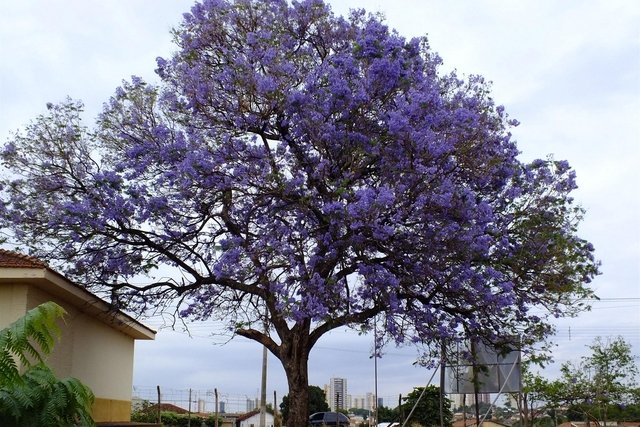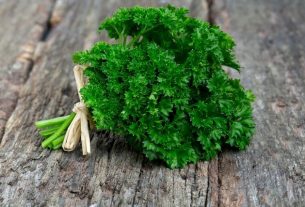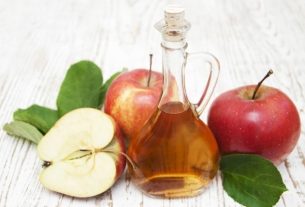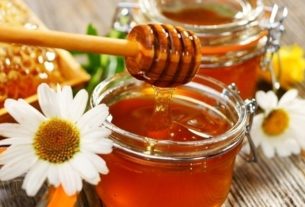Jacaranda, also known as carobinha, is a medicinal plant of the species Jacaranda copaiaindicated to help treat skin wounds, poor digestion or constipation, for example.
The normally used parts of the rosewood tree are the dried leaves or bark, from which medicinal substances with anti-inflammatory, laxative and healing properties are extracted, for example.
Carobinha or rosewood can be found in health food stores or compounding pharmacies and, although it has many benefits, it does not replace conventional medical treatment and should be used under medical advice or from a herbalist.

What is it for
Carobinha or rosewood is indicated to help in the treatment of:
- Skin wounds, hives, acne and chickenpox;
- Constipation or poor digestion;
- Rheumatism or arthritis;
- Syphilis or gonorrhea;
- Liquid retention;
- Fever, sore throat, severe colds or pneumonia;
- High cholesterol;
- Leishmaniasis.
The benefits of carobinha or rosewood are due to the substances in its composition such as carobina, carobic and ursolic acids and jacaranone, for example, with laxative, healing, diuretic and anti-inflammatory properties.
Despite having many health benefits, the consumption of carobinha or rosewood should not replace treatment recommended by a doctor, and should be used with the guidance of a doctor or herbalist.
How to make carobinha tea
Carobinha or rosewood tea must be prepared using the dried or fresh leaves, or the bark of the plant, and can be used orally or for compresses, gargles or sitz baths.
Ingredients
- 2 tablespoons of fresh leaves or 1 sachet of dried carobinha leaves;
- 1 liter of water.
Preparation mode
Place the water in a container and heat until it boils. Then turn off the heat and add the carobinha or rosewood, cover and let it rest for 5 minutes. Then, it must be strained, allowed to cool and drink up to 4 cups a day.
This tea can also be used in the form of compresses on the skin, to help wounds heal, or even used to wash wounds and help with their healing.
Furthermore, carobinha tea can also be used to gargle and soothe a sore throat.
Carobinha tea can also be used in sitz baths to treat ulcers and sexually transmitted diseases.
What to do to improve healing
To improve the healing of wounds without bandages, you should wash the area well with neutral, odorless soap, keep the area clean and ventilated and avoid exerting effort or placing objects on the affected area.
In the case of wounds that are covered with a bandage, only the first wash should be done with neutral soap, while subsequent washes should be done with water only.
In addition to caring for the affected region, the consumption of healing foods should be increased, such as white meat, fish, eggs, oranges, pineapple, peanuts and eggplant. See a complete list of healing foods.
Possible side effects
The side effects of carobinha or rosewood are not yet known, therefore, their use should only be done with medical advice or from a health professional with experience in medicinal plants.
Who shouldn’t use
Carobinha or rosewood should not be used by children, pregnant or breastfeeding women.
Bibliography
- GRANDI, M, Telma Sueli. Treaty of medicinal plants from Minas Gerais, native and cultivated. 1.ed. Minas Gerais, Brazil: Adaequatro Estúdio, 2014. 341-343.
- JONES, F. A.; HUBBELL, S. P. Demographic spatial genetic structure of the Neotropical tree, Jacaranda copaia. Mol Ecol. 15. 11; 3205-17, 2006

Sign up for our newsletter and stay up to date with exclusive news
that can transform your routine!
Warning: Undefined array key "title" in /home/storelat/public_html/wp-content/plugins/link-whisper-premium/templates/frontend/related-posts.php on line 12
Warning: Undefined array key "title_tag" in /home/storelat/public_html/wp-content/plugins/link-whisper-premium/templates/frontend/related-posts.php on line 13



